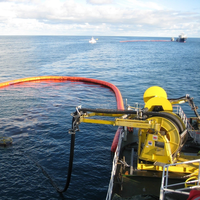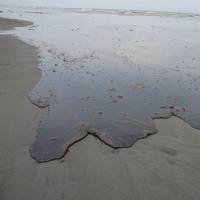Partnership Creates spill Response 'One-Stop-Shop'

Norwegian suppliers Framo, Maritime Partner, Norbit Aptomar, and NorLense have come together to create the OSRV (Oil Spill Recovery Vessel) Group to offer a complete oil spill response solution. “Our aim is to be a one-stop-shop where we pool our efforts and act as a total systems supplier of safe, highly functional, and well-tested technology. The emergency response equipment has undergone thorough testing and quality assurance drawing on 40 years of oil spill response experience,” says Jørgen Brandt Theodorsen, Area Manager, Oil & Gas Pumping Systems, at Framo.
Collaboration Enhances Oil Spill Research

The University of South Florida’s (USF) College of Marine Science announced a new partnership with Agilent Technologies and the Gulf of Mexico Research Initiative (GoMRI) for analytical chemistry equipment to study oil spills. Funded by GoMRI and Agilent’s Research Support Program, the partnership will allow access to cutting-edge analytical instrumentation to better understand the effects of oil as well as other emerging contaminants in the environment. The Center for the Integrated…
SoCal Beach Cleanup Could Take Months
The U.S. Coast Guard captain overseeing cleanup of oil spilled from a pipeline rupture that closed two California state beaches and fouled offshore waters near Santa Barbara said on Thursday it may take months to restore the area to its natural condition. Up to 2,500 barrels (105,000 gallons) of crude petroleum, according to latest estimates, gushed onto San Refugio State Beach and into the Pacific about 20 miles (32 km) west of Santa Barbara on Tuesday when an underground pipeline that runs along the coastal highway burst. As much as a fifth of the amount was believed to have reached the ocean, leaving oil slicks that stretched for more than 9 miles (15 km) along the coast.
Study: An Arctic Oil Well Blowout Could Spread More Than 1,000km
Oil from a spill or oil well blowout in the Arctic waters of Canada's Beaufort Sea could easily become trapped in sea ice and potentially spread more than 1,000 kilometres to the west coast of Alaska, a World Wildlife Fund study showed on Friday. The WWF contracted RPS Applied Science Associates to model 22 different oil spill scenarios and map the spread of the oil, potential impact on the water and shoreline, and interaction with sea ice, wildlife and the surrounding ecology. Types of oil spills analyzed included shipping spills, shallow-water blowouts and deep-water blowouts. The BP Plc Macondo oil well rupture in 2010 that unleashed more than four million barrels of oil into the Gulf of Mexico was a deep-water blowout.
Offshore Energy Timeline:1806-2014
1806 - Spring pole cable drilling developed in US. 1844 - Fluid circulating rotary well drilling patented in England. 1845 - Circulated fluid used to remove drill cuttings for first time. 1860 - Fluid circulation rotary diamond coring drill developed in France. 1869 – T homas Fitch Rowland patents a “submarine drilling apparatus,” a fixed, working platform for drilling offshore to a depth of almost 50 feet. The anchored tower had telescoping legs, similar to modern offshore platforms. 1878 - First bulk oil tanker begins operation in the Caspian Sea. 1891 - First ocean-going tanker launched. 1897 - Wells drilled off piers in Summerland, Calif. 1905 – Oil discovered in the Caddo Pine Island field in Lousiana. 1911 - Gulf Refining Co.
Deepwater Horizon—Further proof that oil and water don’t mix
Maritime Reporter invited Carleen Lyden-Kluss, Co-Founder and Executive Director of the North American Marine Environment Protection Association to provide an overview of the Deepwater Horizon disaster in the Gulf of Mexico. On April 20, our maritime world changed. No matter how you slice it, everyone in the maritime industry feels the effects of the tragedy; the loss of 11 lives and injury to 17 others, the extensive environmental impact, the economic fallout and ongoing costs, the exposure of weaknesses in the response system, and the regulatory changes that will result from this. The details of the event are well known: the Deepwater Horizon oil spill, also called the BP Oil Spill/the Gulf of Mexico oil spill, is now considered the largest offshore spill in U.S. history.





